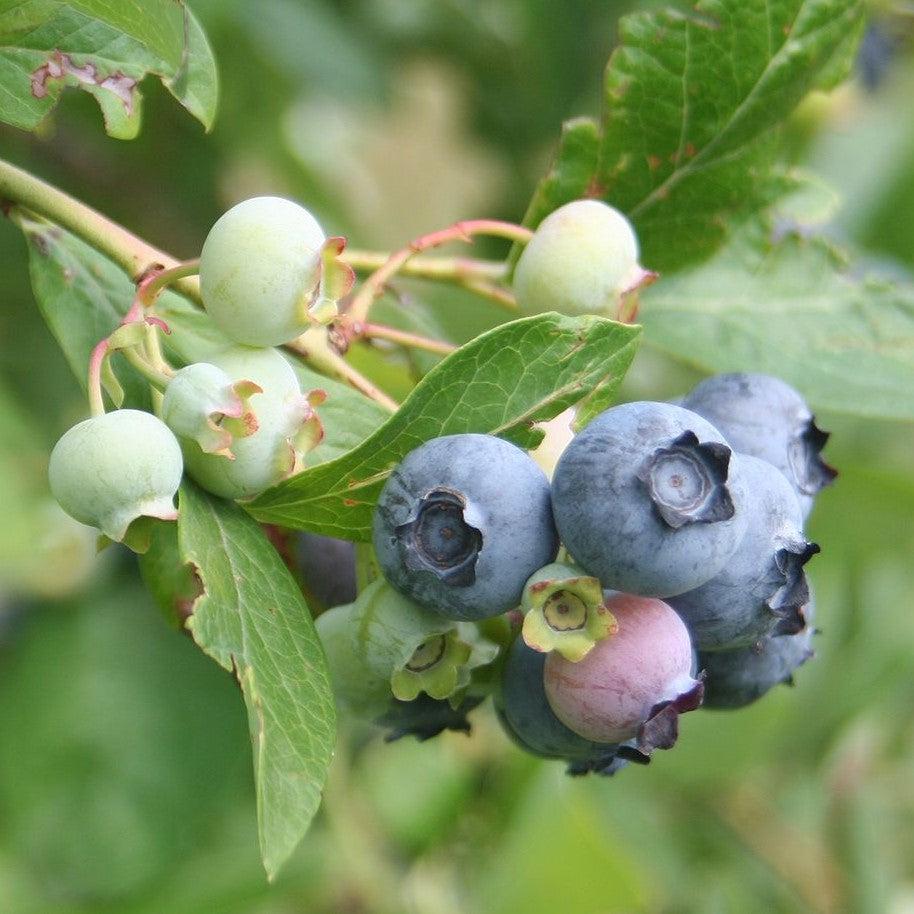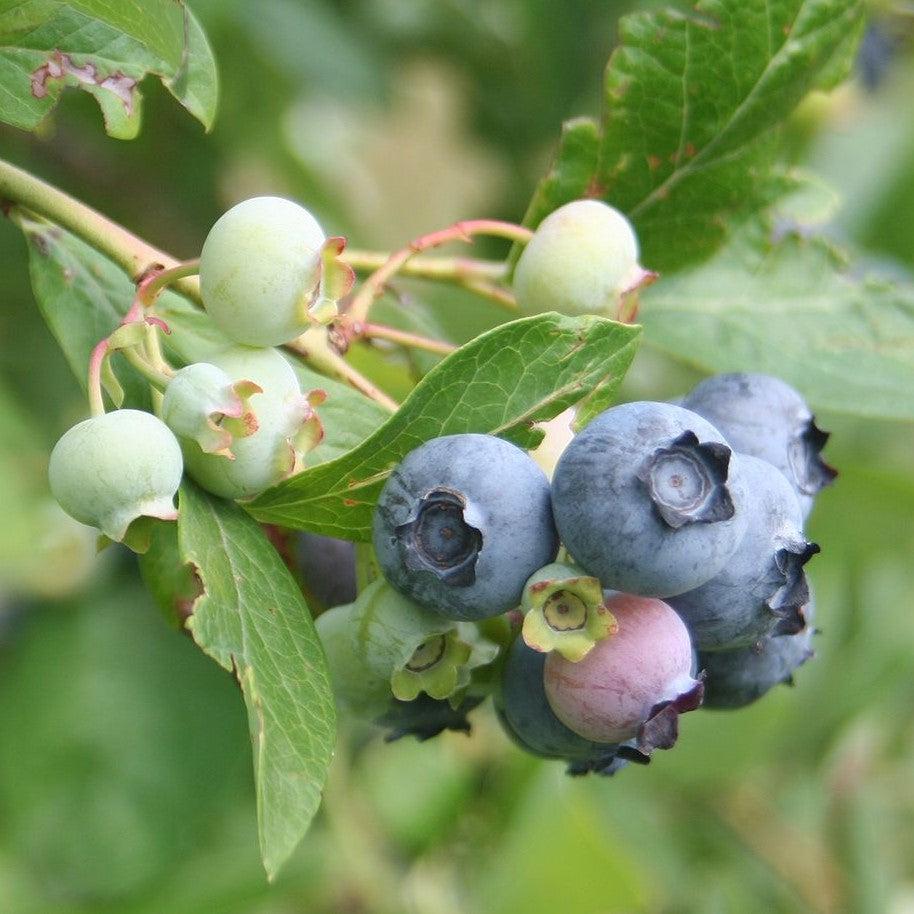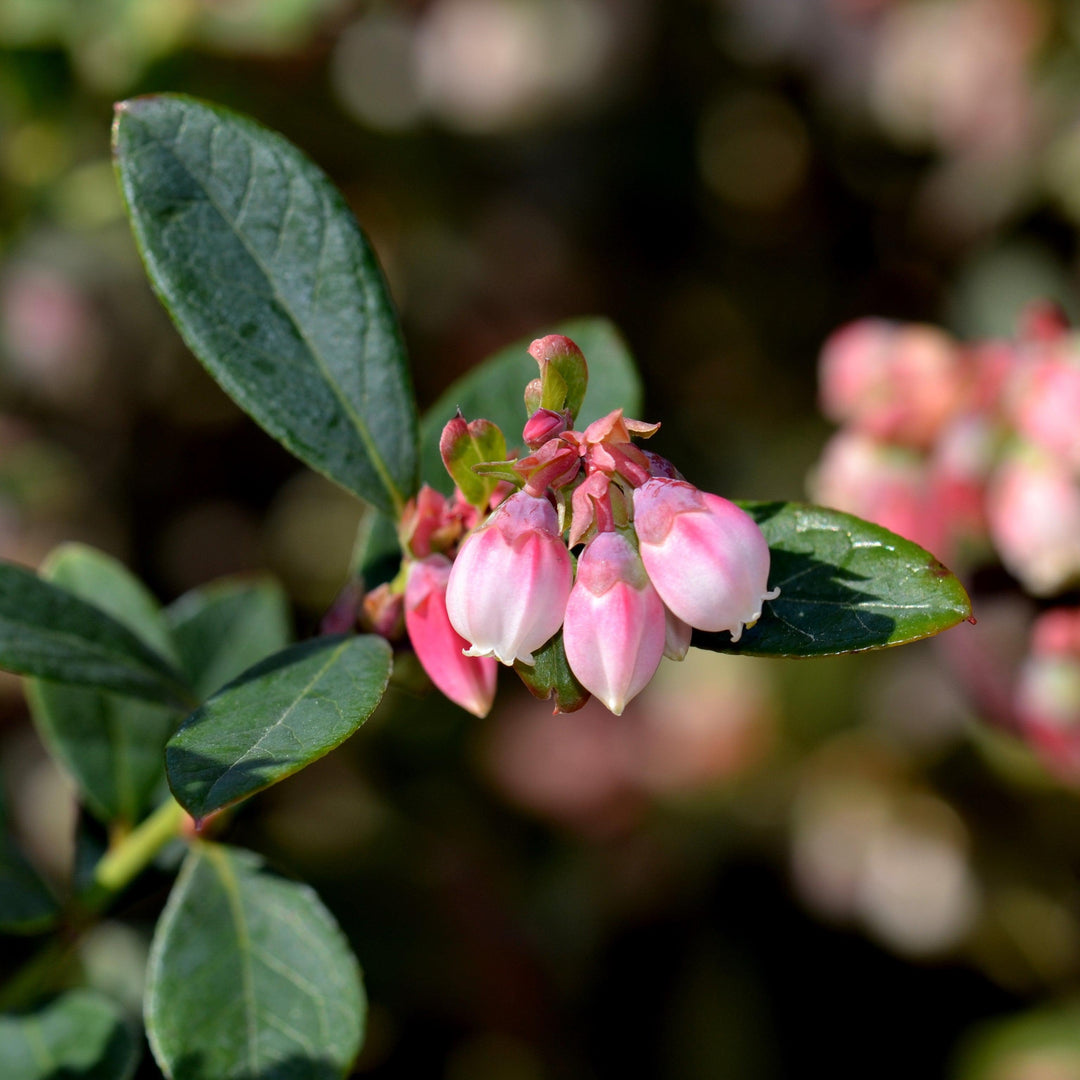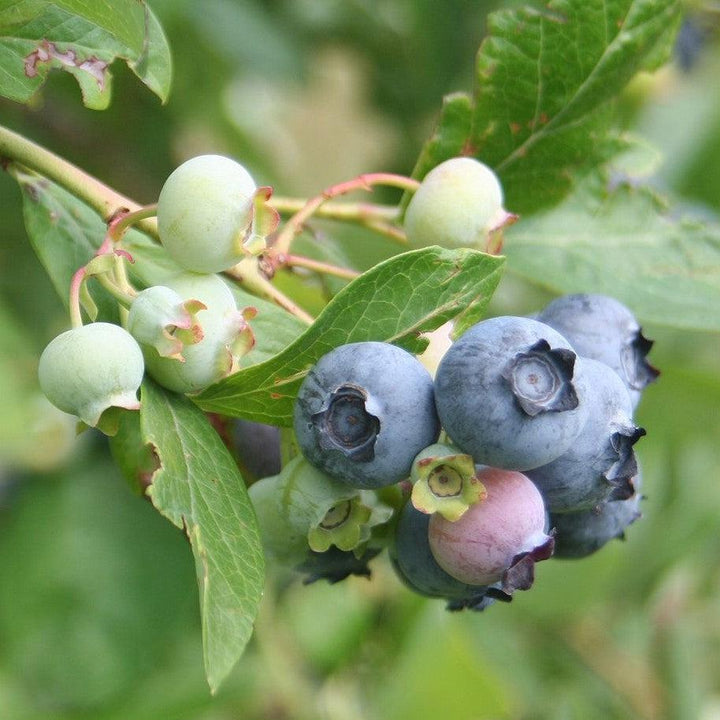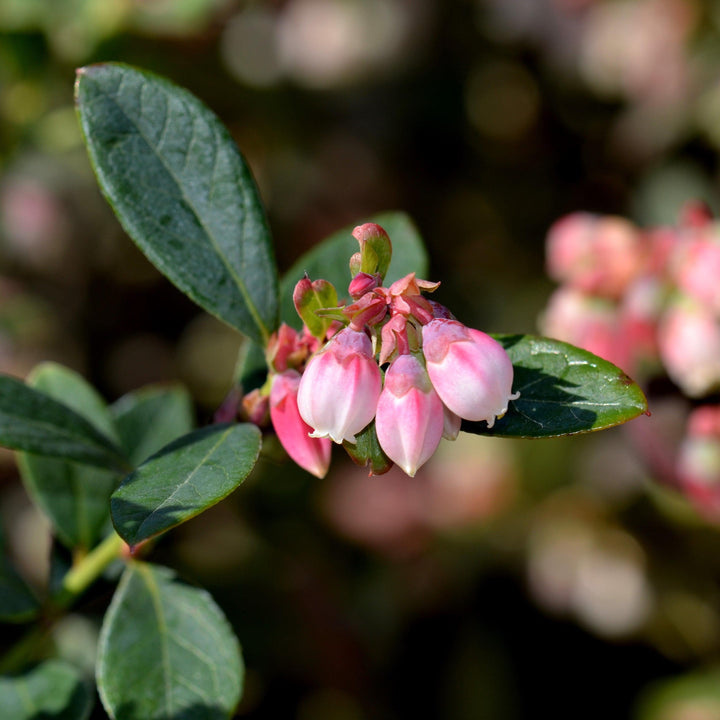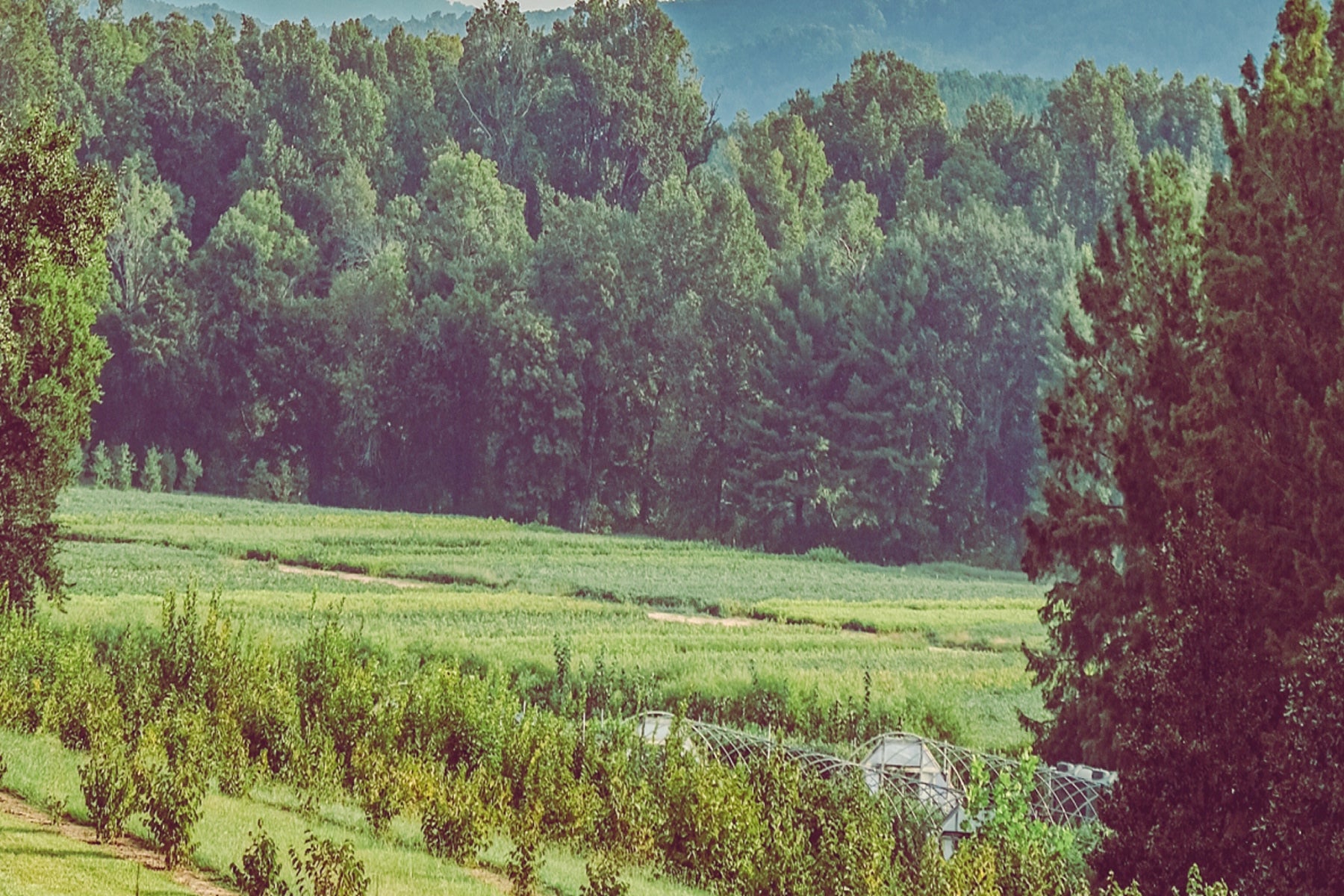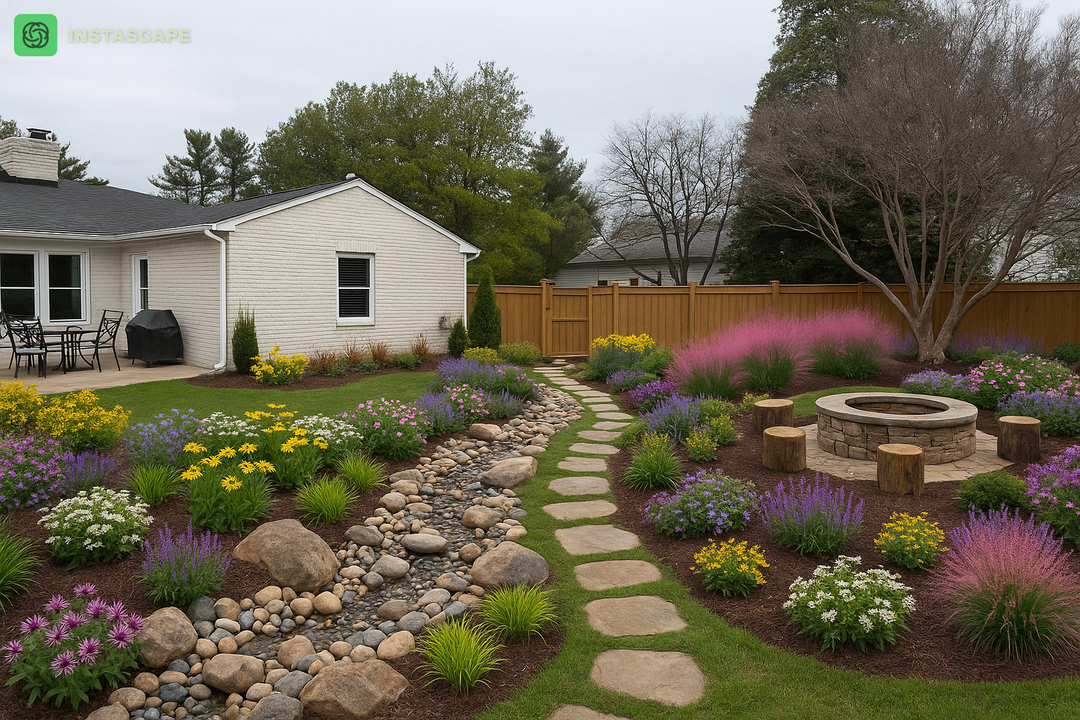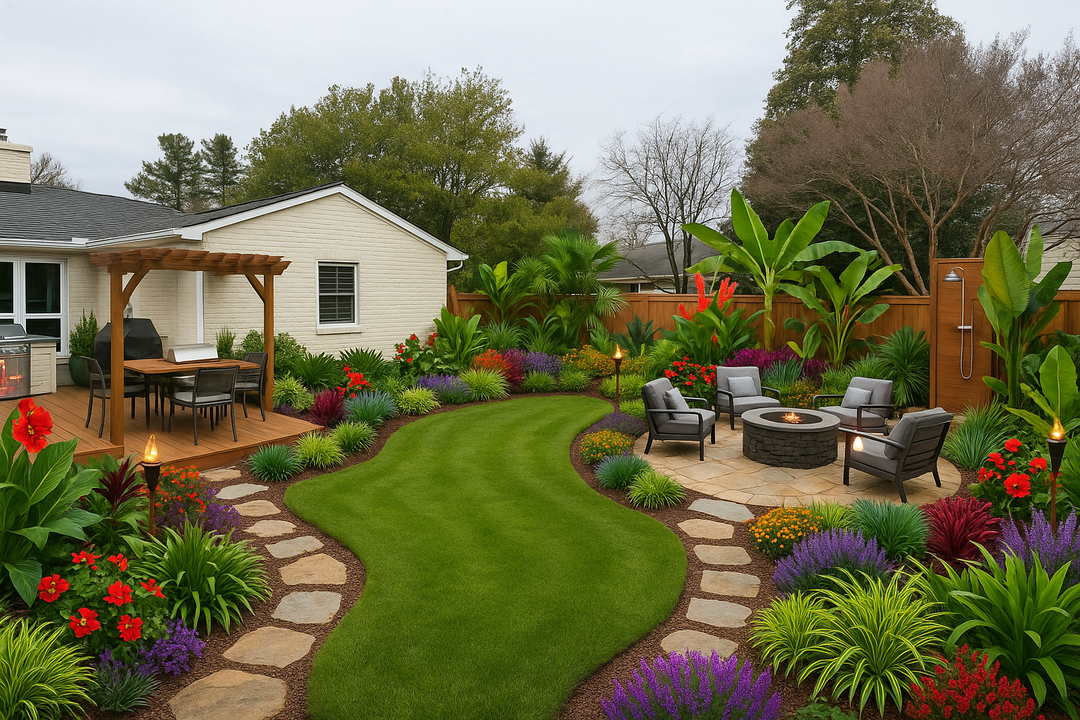Sunshine Blue Blueberry is a dwarf native deciduous shrub that produces small, but sweet edible blue berries that ripen in mid to late summer. Its elliptical blue green foliage turns shades of coppery red in fall. The loose pendulous clusters of attractive pink to white spring flowers give way to the signature berries. Grows best with full sun and rich, moist well-drained acidic soils. While self-fertile, cross-pollination will produce a better crop. Sunshine Blue has a very low chill requirement at only 150 hours.
Vaccinium corymbosum are highly valuable for wildlife as well, being listed as a host plant for 32 different butterflies and moths, and provides nectar to several specialized bees.
|
Type: |
|
|
Origins: |
Native Hybrid |
|
Height: |
3' - 4' |
|
Spread: |
3’ - 4' |
|
Spacing: |
4' |
|
USDA Hardiness Zone: |
5 - 9 |
|
Culture: |
|
|
Bloom Color: |
Pink |
|
Season of Interest: |
MAINTENANCE NEEDS: Medium Maintenance. Water regularly and mulch. Prune as needed in late winter. Chlorosis may occur in high PH soils. Blight, rot, anthracnose, canker, and mildew are occasional problems. Blueberry maggot, fruit worms, and spotted wing drosophila can damage the fruit. Mummy berry is a fungal disease that shrivels and dries the fruit- remove effected fruit immediately if spotted.
LANDSCAPE USES: Accents or Group Plantings, Borders, Naturalized Areas, Woodland Gardens, Rock Gardens, Hedges, Foundation Plantings, Edible Gardens, and Containers.
COMPANION PLANTS: California Lilac, Raspberry, Azalea
IMAGES: Dantheman~commonswiki, Myrtille Wikipedia Dan 0429, CC BY-SA 2.5, (2) Photoset by Tracie Hall, (1) DSC_0119, (2) DSC_0123
*As plants have ranges in appearance they may not appear as the images shown.

